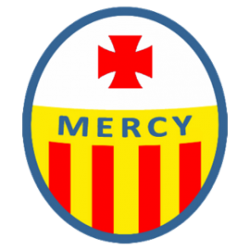Good morning Reception parents and children,
Welcome to today’s home learning.
Reading
Here’s a reminder two excellent websites which offer free reading activities.
https://phonicsplaycomics.co.uk/

https://www.phonicsplay.co.uk/

The reading activities are delivered in phases. Begin with Phase 2 and Phase 3 games. However, some Phase 4 games will also be beneficial for children who are confident with all the Phase 2 and Phase 3 sounds (these are the sounds we’ve covered so far).
Try games such as ‘Buried Treasure’, ‘Picnic on Pluto’ or ‘Dragon’s Den’ and select the sounds we recently covered eg.’ ear’, ‘air’ or today’s sound ‘ure’.
Letters and Sounds
Today’s new sound – ‘ure’ (trigraph three letters but one sound)
This video introduces the ‘ure’ sound. This is probably one of the more difficult sounds to learn. It is also less frequent and your child may find it a little challenging to remember.
Show your child how to write ‘ure’ using the correct letter formation.

Letter formation for ‘u’ ‘r’ and ‘e’ can be found in your child’s letters and sounds book.
Encourage your child to ‘have a go’ at writing the ‘ure’ sound.
For challenge:
Only if your child is ready. Write the following words:

For extra challenge:
Write a sentence.

Maths and Physical Development
Play hopscotch

What you need:
- Chalk (outside) or masking tape (if playing inside).
- Markers for each person playing – pebble, bottle cap, shell, button, etc.
What to do:
- Use chalk to draw a hopscotch pattern on the ground or use masking tape on the floor.
- Each player has a marker such as a stone, bottle cap, shell, button, etc.
- The first player stands behind the starting line to toss his or her marker into hopscotch grid.
- Hop to the end of the grid. All hopping is done on one foot unless the hopscotch design is such that two squares are side-by-side. Then two feet can be placed down with one in each square.
- Once at the end of the gird, turn around and hop back again. Pick up the marker on the way back.
Questions to ask:
What number did the stone land on?
How many hops and how many jumps will you need to take to land on that number?
Adaptations:
Ask your child to draw/find a collection of objects that matches each number and place it on the grid.
Rub out some of the numbers or write a number that doesn’t fit. Ask your child to ‘spot the problem’ and correct it or fill in missing numbers within the squares.
Change the numbers on the hopscotch to 11-20.
Physical Development
Threading
This activity will help develop the small muscles in your child’s hands, wrists and fingers which are so important for holding a pen and writing.
You will need:
- Kitchen roll tube with holes around it, made by the adult. Use a screw driver, bradawl or pen to do this. Or use a colander, sieve or any household object with multiple holes.
- Spaghetti sticks, pipe cleaners, string or wool and a plastic child-friendly sewing needle, straws, cable ties.
- Timer (egg timer or use a mobile phone).
What to do:
- Invite your child to help you gather the resources you need e.g. spaghetti and a kitchen roll tube that the adult has made some holes in (see below).

- Suggest that you are going to do some threading together. Show your child how you might push the spaghetti sticks through the tube carefully, so they come out the other side, making sure they don’t snap!
- Encourage your child to do this independently.
- Choose a range of materials to pass through the holes – string, pipe cleaners, straws, cable ties.
- Talk to your child as they work, asking questions such as ‘Which objects went through easily? Which were harder to thread? How many objects have you threaded through altogether?’
Adaptations:
- Try using objects with larger and smaller holes and talk about which are easier to thread?
- Make a chart to show which objects were easier to thread and which were harder. Talk about why this might be?
- How many sticks/pipe cleaners can you thread through your object?
- Introduce a timer to add challenge e.g. how quickly can your child thread 10 objects?
- Invite your child to decorate the tube before or after the threading activity.
Wishing you all a wonderful day.
Nicola Palmer

